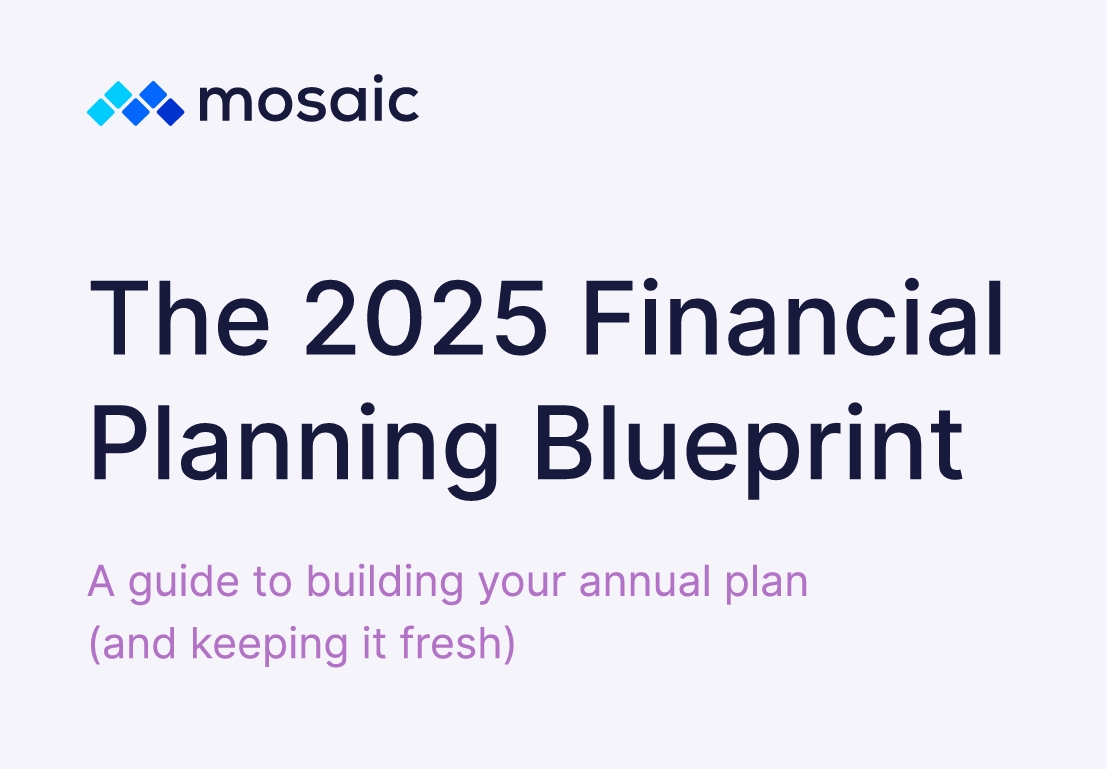This guide breaks down the 2025 Financial Planning Blueprint, offering actionable insights to help finance teams navigate uncertainty, optimize costs, and drive strategic decision-making. Whether you’re a CFO, FP&A professional, or business leader, these strategies will ensure your company thrives in a volatile economic landscape.
Financial Planning in 2025 Demands a New Approach
The 2025 financial planning season is shaping up to be one of the most challenging in recent years due to high uncertainty around. With market slowdowns, elevated interest rates, and tighter access to capital, businesses must rethink traditional budgeting methods to stay agile and profitable.
8 Key Reasons Why 2025 Planning Is Different
1. Balancing Growth and Profitability
The era of “growth at all costs” is over. Companies must now prioritize profitability and cash flow to survive. This means:
- Conducting profitability analysis by market, product line, and channel.
- Avoiding overextension by focusing on sustainable growth strategies.
2. The Return of Zero-Based Budgeting (ZBB)
ZBB forces departments to justify every expense from scratch rather than relying on historical budgets. Benefits include:
- Eliminating unnecessary costs.
- Encouraging accountability among department leaders.
3. Vendor Spend Consolidation
Reducing software and service redundancies can lead to significant savings. Examples:
- Consolidating tools (e.g., using Salesforce instead of multiple CRM platforms).
- Negotiating volume discounts with key vendors.
4. The Rise of AI in Financial Planning
AI is transforming finance by:
- Automating data hygiene and anomaly detection.
- Enhancing predictive analytics and forecasting.
- Providing prescriptive insights for better decision-making.
5. What-If Scenario Planning Takes Center Stage
Companies must prepare multiple financial scenarios (low, medium, high) to adapt quickly to market shifts. Key steps:
- Assigning confidence levels to each scenario (e.g., “85% chance of achieving Plan A”).
- Stress-testing assumptions for revenue, cash flow, and headcount.
6. Vendor-Level Forecasting for Cost Control
Instead of broad expense categories, finance teams should:
- Track spending by individual vendor.
- Identify areas of overspending and optimize contracts.
7. Monthly (Not Quarterly) Forecasting
Waiting a full quarter to adjust forecasts is too risky. Monthly updates help businesses:
- React faster to performance changes.
- Avoid cash flow surprises.
8. Doubling Down on High-ROI Channels
In a cost-cutting environment, companies must:
- Focus budgets on top-performing marketing, sales, and product channels.
- Cut underperforming initiatives to maximize efficiency.
The 5-Phase Financial Planning Blueprint in Uncertainty of 2025

Phase 1: Gather, Organize, and Understand the Data
- Known-knowns: Analyze historical spend trends (e.g., consistent marketing expenses).
- Known-unknowns: Identify irregular expenses (e.g., one-time software purchases).
- Use a driver-based approach (e.g., per-head costs) for flexible forecasting.
Phase 2: Break Out to Department-Level Plans
- Collaborate with sales, marketing, product, and other teams.
- Use a mix of top-down and bottom-up budgeting.
- Ask strategic questions (see sample questions below).
Sample Questions for Department Leaders:
- Sales: “How will new reps impact revenue?”
- Marketing: “Which campaigns deliver the highest ROI?”
- Product: “What tech investments are needed for scaling?”
Phase 3: Translate Department Plans into Scenarios
- Convert cash-based department plans into GAAP-compliant models.
- Run what-if scenarios (e.g., hiring freezes, fundraising impacts).
Example Scenario:
- Baseline: 100 employees, $5M ARR.
- High Case: 120 employees, $6M ARR.
- Market Downturn: 90 employees, $3.75M ARR.

Phase 4: Align with the CEO and Board
- Present finalized scenarios for approval.
- Ensure alignment on risk tolerance and strategic priorities.
Phase 5: Monthly Reforecasting for Agility
- Update forecasts every month (not just quarterly).
- Use rolling forecasts to stay ahead of market shifts.
4 Ways Software Can Streamline 2025 Planning
- Vendor-Level Forecasting – Track expenses by vendor to cut waste.
- What-If Scenario Modeling – Quickly test different financial outcomes.
- Rolling Forecasting – Automate monthly plan updates.
- Balance Sheet Planning – Improve cash flow visibility.
Conclusion: Building a Resilient Financial Planning for Uncertainty of 2025
The 2025 financial planning season demands agility, precision, and strategic foresight due to higher level of uncertainty. By adopting zero-based budgeting, AI-driven insights, and monthly reforecasting, businesses can navigate uncertainty with confidence.
Key Takeaways:
✅ Prioritize profitability over unchecked growth.
✅ Use scenario planning to prepare for volatility.
✅ Leverage software automation for efficiency.
✅ Maintain monthly financial reviews to stay agile.
🔗 Links for More:
Download and read the e-book on Mosaic website or from NeoForm LinkedIn page.
📌 About NeoForm Partners:
NeoForm Partners helps businesses optimize financial strategy and planning through cutting-edge tools and frameworks. Visit our blog for more insights.
Ready to elevate your financial planning? Contact us to take your financial strategy, planning and execution to the next level.

2 Comments
Mastering Operating Budgets for FP&A Leaders - NeoForm Business Partners
[…] Financial Planning in Uncertainty of 2025 […]
How Integrated Business Planning Unlocks True Financial Transformation - NeoForm Business Partners
[…] Financial Planning in Uncertainty of 2025 […]
Comments are closed.